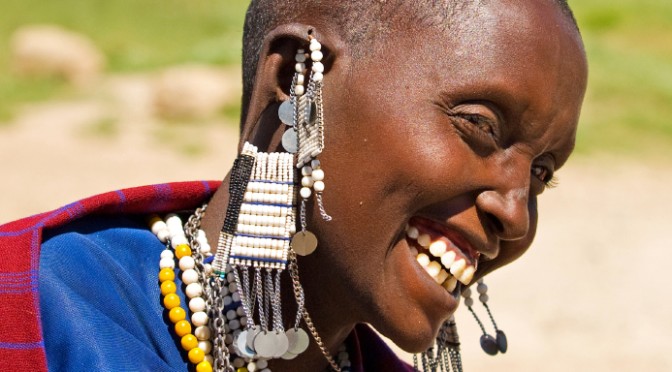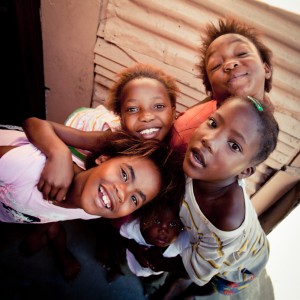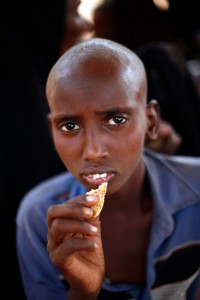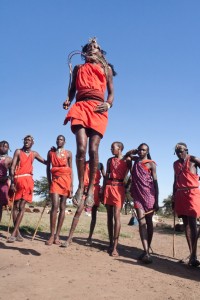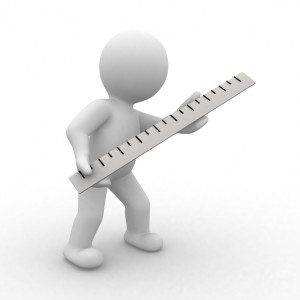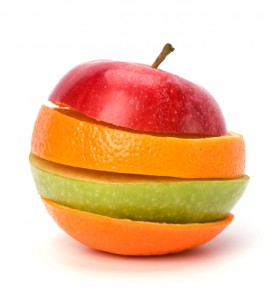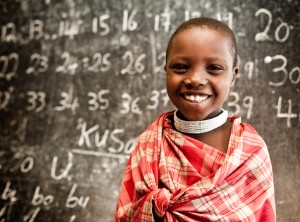Can you solve the complex challenge of global poverty in just 7 words? Well, yes and no – and perhaps not for the reasons you think. Firstly, let’s deal with an obvious point. Words alone won’t solve it; but the actions that those words imply, just might. “Words are the clothes that thoughts wear”. Such words thus embody ways of thinking, which in turn can drive behaviour and that lasting change in behaviour can, we contend, ultimately solve poverty.
But what do we MEAN by poverty?
These are our 7 words. Or six if you leave out ‘the’. To expand this summary a little, our contention is that in order to overcome, or otherwise solve poverty, we need to do 3 things better than we have done, up until now:
- Define the problem
- Map, or otherwise measure and represent the problem; and then
- Focus the various stakeholders, or ‘fixers’ who are individually and collectively motivated to overcome the problem.
Progress can be and is being made WITHOUT doing these 3 things as well as we might. Our view is that existing efforts by existing ‘fixers’ will prove far more effective if there is better co-ordination and agreement between them. Simply put, we will get much more done with the same, or less resources, if we all know more clearly what we are all doing where, together with why and how we are doing it. It is simply looking for consistent and clear answers to Rudyard Kipling’s classic ‘6 Honest Serving Men’: who, when, where, what, why and how.
This post specifically tackles the first step, summarised in the first two words: ‘define poverty’. What’s your definition? Did you ever look it up in a dictionary? Dictionary.com has three! You can check them out. The first includes the phrase: “The state, or condition of having little, or no money, goods, or means of support”. The second says “The deficiency of necessary, or desirable goods or ingredients”. Both of these are helpful, but they are not universal. Worse still, they are not particularly memorable. Do you think you will remember them tomorrow? Or even in 5 minutes time? And how well do you think a 5 year old would do understanding them & discussing them with their friends? Exactly…
Now imagine trying to spread that common understanding to 7 billion people across some 200 countries and speaking thousands of different languages. Not easy, right? No wonder we encounter some difficulty in tackling a problem that we collectively even struggle to define memorably.
Yes. We looked at a number of sources and combined that with some practical thinking, recognising that we specifically wanted a definition we could USE analytically, which would help focus the very efforts to solve the problem, which the word itself was labelling. We recognised the idea of poverty was not new. In Isaiah chapter 58, within the Bible, the writer lists some basic social standards that were expected of the people: ‘when you see the naked, clothe them’, ‘share your food with the hungry’ and ‘provide the poor wanderer with shelter’. These words were originally written several thousand years ago. They remain very practical today.
Fast forward to the 21st century and Wikipedia’s definition of ‘absolute poverty’ covers some strikingly common ground. Their list refers to “the deprivation of basic human needs, which commonly includes food, water, sanitation, clothing, shelter, health care and education”. Those agreeing the Millennium Development Goals might well have had such definitions of absolute poverty in mind.
Now compare those lists to Maslow’s Hierarchy of needs, or motivations. If you are not familiar with Maslow’s work, you can find out more at Wikipedia, among other sources. In summary, he found that people the world over, were motivated by different things at different times. Nothing amazing there, you might think. However, Maslow’s remarkable insight was that these human motivations were typically organised into a hierarchy, whether or not we are consciously aware of it. This meant that people tended to start off with motivations at basic levels of survival and security, before moving on to ‘higher’ level motivations, regarding such things as belonging and achievement.
Our particular reason for referencing Maslow’s work here is its ability to model apparently complex, highly differentiated real-world human behaviours into a fairly simple model. That model can be consistently applied to all kinds of people, at all kinds of times and in all kinds of places. It allows flexibility in its terms, such that the “achievement” layer can be uniquely interpreted for each individual, while the underlying desire to “achieve” is common to all. The Concise Oxford English Dictionary has referred to “success” as ‘the achievement of that which was aimed at’. Our aim here is clear: solve poverty.
In that sense, Maslow’s model allowed that different people may well be aiming at vastly different things, but that they were all tending to aim at something! The aiming itself, reflected the common underlying motivation of a desire to achieve. It is this same approach, of simple commonality underlying apparent complexity, which we borrow for our own definition of poverty. We also make use of insights from Maslow’s lower motivation layers of survival, security and belonging.
One more vital component in our definition, before we proceed. It is the core idea that poverty is ‘relative’, not ‘absolute’. Organisations like the United Nations and the World Bank understandably promote the generally adopted definition of ‘extreme poverty’ as those who live on the equivalent of US$1.25 a day. This approach is useful for their own purposes, as both population figures and GDP figures for UN member (and other) countries go back a long way and are readily accessible, country by country, region by region. This is impressively illustrated by the stunning short video on global poverty indicators by Hans Rosling, called “200 Countries, 200 Years“. You will be amazed at how much complexity Rosling explains with such simplicity in 4 minutes. Do watch it. It has our highest commendation.
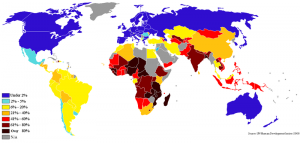
“The relative absence of the 7 Humanitarian Basics”.
Unpacking this definition, observe the following. It is written in adult language, but the underlying ideas can still be conveyed in simple terms. Instead of “relative absence of”, the 5 year olds we had in mind might say “not enough of”. Which brings us to the second observation. Poverty should be understood at its core and from the outset as relative. But that does not mean we cannot measure and compare it.
Consider human height. Like many attributes from the natural world, it follows a typical ‘normal distribution curve’ of values, when comparing 7 billion people to each other. When measured in absolute terms, everyone’s height is different. If taller is better, then in that sense, we can compare the absolute measure of height, to give us the relative measure of whether people are taller (‘richer’), or shorter (‘poorer’) than each other. If I am 6 feet tall, then I am relatively shorter than pretty much all the USA basketball team, the Harlem Globetrotters. if I was in that team, I might well FEEL short among that group of peers. Among my usual peers in my own country, I am considered tall and indeed I feel tall. So how I see myself and how others see me is relative and is affected by my perceived position among my peers. There is no single, absolute global definition for ‘tallness’, or ‘shortness’. They are relative terms. And so is ‘poverty’.
Nevertheless, I can measure my actual height with some precision, always knowing that my feelings and perceptions of “tallness” and “shortness” are driven relatively. The same is true with our definition of poverty. It allows for the experience of poverty in relative terms, but accommodates its measurement in more absolute terms. These two simultaneous aspects of the definition make it more useful for our wider purposes.
The last part of the definition relates to “humanitarian basics”. We choose ‘basics’ instead of ‘needs’, because the things we list are not all truly necessary for sustaining human life. You can get by without some of them – and billions of people alive today do. Instead, we prefer the notion of basics, a minimum standard. We use ‘humanitarian’, instead of ‘human’, because people are perfectly capable of surviving and even thriving as humans without having in place all 7 of the ‘basics’ we list.
Instead, we think in terms of a rational human being setting a fair and reasonable minimum acceptable standard for another human being, that they did not know. As our guide, we asked ourselves the question: “What would we consider a minimum standard, even for someone who we didn’t like?”
Thus we have our definition of poverty. But what are the 7 Humanitarian Basics that our definition refers to? They are drawn out and consolidated from the ancient Biblical Isaiah list, the modern Wikipedia definition of absolute poverty and the bottom 3 layers Maslow’s Hierarchy. They deliberately therefore draw on understandings of poverty that have stood the test of time, while remaining thoroughly modern and relevant. They cluster certain ideas together for convenience, ease of recall and subsequent explanation to others. They are intended to be generic enough concepts to permit adaptation to relevant cultural experiences and variations. Each of them will be the subject of other posts, giving more explanation on each ‘Basic’. Posts will be suitably tagged to permit cross-referencing with other relevant posts on the subject.
And the 7 Humanitarian Basics are:
1. Water. 2. Food. 3. Clothing. 4. Shelter. 5. Healthcare. 6. Engagement. 7. Freedom from Oppression.
Some will require further explanation and unpacking, which we will cover elsewhere on our web site and in these posts. By way of introduction, consider yourself dropped into the story of Robinson Crusoe, stranded on a remote island. Your own order of priorities will not be that different from the above list. That’s what makes it so universal and so memorable. In that sense and by our definition, Crusoe suddenly found himself lacking the 7 Humanitarian Basics & thus set about overcoming his own poverty.
In the same way, please scan through our other material and see how this starting definition can move us from an intellectual exercise onto a practical one, helping to address the pressing lack of humanitarian basics faced by the poorest billion people on the planet.
And thanks again for being…
One in a Billion!

